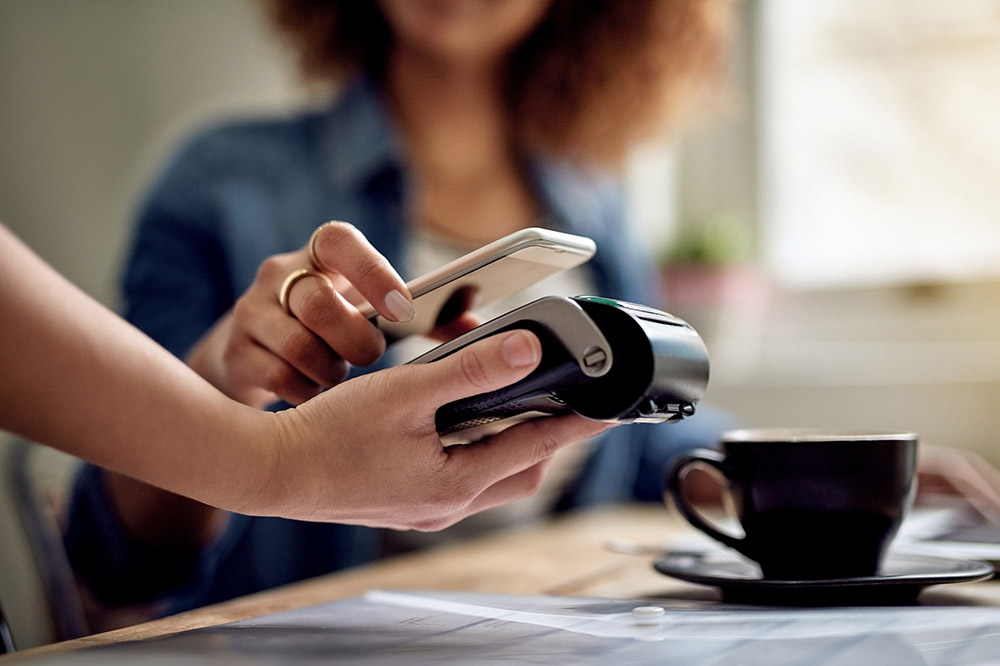Will they? Won’t they? When it comes to digital wallets, it seems there is a lot of speculation over when the much-fabled tipping point will occur, finally bringing solutions like Google Pay and Apple Pay into ubiquity.
A number of factors indicate that 2020 will be the year when digital wallets go mainstream. Already, 60% of US users have three or more payment or reward apps on their phone, with 15% of consumers having eight or more, according to a recent Ibotta survey. The research also found that the majority of consumers would be willing to choose a mobile wallet over their plastic card if there were cost savings or rewards. With the introduction of the Apple Card, which nudges cardholders to choose mobile over plastic using cash-back incentives, we are seeing a new and emerging breed of cards that encourage digital wallet use.
In the UK, the same digital wallet growth is expected. Jon Loveless, Payment Solution Pros United States Founder & CEO, explains in his article titled “New Decade, New (Digital) Payments: What SMEs Need to Know.”
Several recent studies reveal that a lack of understanding of how digital wallets function and their security remain the main obstacles to adoption by consumers.
To solve that, we’ve explained how digital wallets work and what everyone from micro-merchants to global brands can do to accept them.
Digital Wallets 101
Sure, the ability to “tap and go” at a compatible register looks like a snap, but digital wallets are enabled by several technologies that operate behind the scenes. The good news? These technologies require no extra effort or know-how from merchants.
Here’s a quick rundown:
NFC: Near-field communication (NFC) is the technology that enables contactless payment transactions. Shoppers can use a digital wallet to pay for a purchase by simply tapping or waving the enabled device in front of the NFC-enabled terminal at checkout. If required, the customer provides a passcode or scans a finger to approve the transaction. The NFC receiver in the terminal reads the signal from the device. The Secure Element (SE), a microchip in the terminal where personal and financial information is stored, validates the transaction, which is then authorized by the processor.
Encryption: The digital wallet software encrypts a user’s personal information as well as the transaction data. This is accomplished by the encryption software translating regular personal and transaction data into data that can only be read with a special key. This technology isn’t exclusive to payments — many computing devices like desktops, tablets and smartphones use encryption to keep data safe. The technology is used in digital wallets to strongly encrypt all credit card and banking details to help keep them secure.
Tokenization: When using a digital wallet like Google Pay, Samsung Pay or Apple Pay, a process called tokenization is used to ensure a consumer’s card information is never exposed. Personal data, including card number, expiration date or checking account information, is disguised with a single-use, “token” that acts as a stand-in data set to complete the transactions. That means information is safe in the future from fraudsters, as the code expires after one use.
Rather than creating a new system or process to conduct commerce, digital wallets take advantage of the digital infrastructure (or ‘payment rails’) that already exists. This means the same networks and processors are involved, providing greater reliability and allowing you to sell more, faster.
How Can a Business Accept Digital Wallets?
We make it easy for you to accept digital wallets. There are developer aids to easily enable the services, and our customer service teams can help with any questions you have along the way.
For ecommerce businesses, the first step is to decide which digital wallets to accept. We then help you register with the providers so you can get started accepting digital payments. Once you’ve added these options to your checkout flow, your customers can begin using these wallets as their preferred way to pay.
For brick-and-mortar businesses, acceptance is very simple in most regions as long as your terminal is enabled for contactless transactions (like Global Payments terminals). There’s no additional know-how required to accept digital wallets via your point of sale. As more shoppers become as comfortable with digital wallets as they are with their smartphones, retailers can upgrade their processing equipment to NFC technology to meet their customers’ payment expectations. Fortunately, NFC-compatible terminals come equipped to process EMV® transactions as well, so the transition is simplified.
And regardless of your industry ‒ from airline, to entertainment, to food services ‒ we’ve found that our merchants who have started accepting digital wallets in an ecommerce environment consistently realize meaningful benefits. These include a familiar experience for consumers, enhanced security and a flawless customer journey that minimizes payment friction.
The Results
The results are powerful: our businesses who have adopted digital wallets realize a dramatic spike in wallet volumes initially and proportionally surpasses their traditional card processing month over month. The percentage increase of wallet volume ranges from 100% to 350% in a six-month period for our top three merchants using the service. The numbers are clear ‒ consumers are using their digital wallets more and more, both in an ecommerce setting and in person.
Need help accepting digital wallets? We can help, reach out solutions@PaymentSolutionPros.com or 888-731-4443 x401

